
A British troop assigned to Royal Air Force II Squadron takes a photo of an Afghan detainee for biometric purposes, June 26, 2010, Dand District Kandahar, Afghanistan. RAF II Squadron partnered with the Afghan National Army 205th Corps and Afghan National Police to perform a joint patrol through local villages in search of insurgents, weapons caches and illegal drugs. As a result, three insurgents were found and detained, along with several pounds of marijuana. (U.S. Air Force photo by Senior Airman Kenny Holston)(Released)
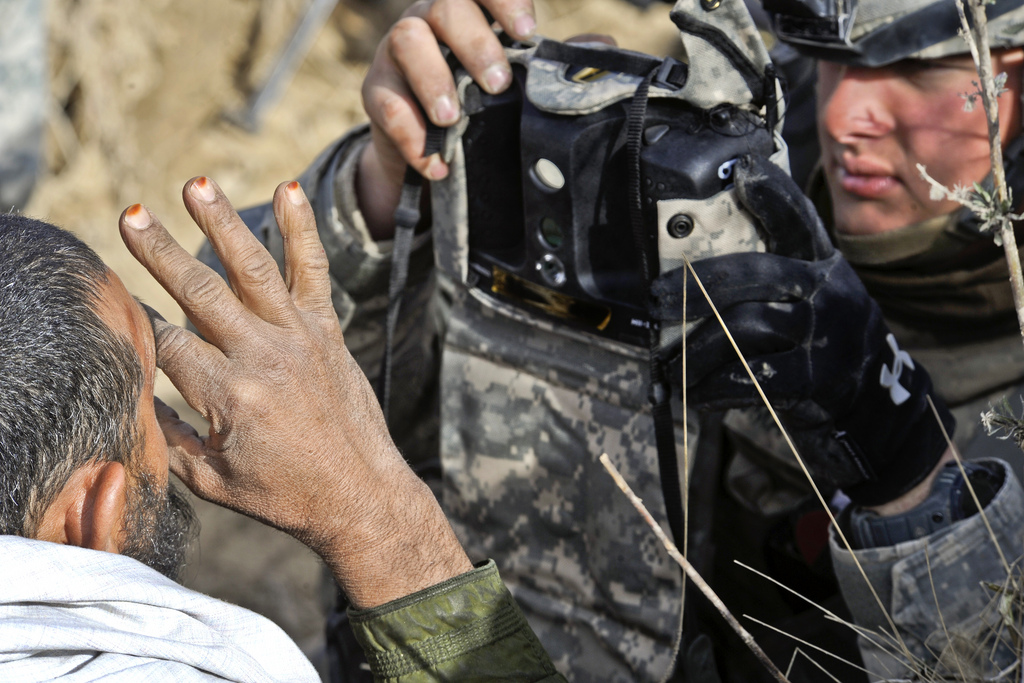
U.S. Army Pfc. Andrew Bock, with Alpha Company, 1st Battalion, 17th Infantry Regiment, uses Handheld Interagency Identification Detection Equipment (HIIDE) to gather information on an Afghan national during Operation Helmand Spider in Badula Qulp, Helmand province, Afghanistan, Feb. 15, 2010. HIIDE is a multimodal biometric system that collects and compares fingerprints and iris and facial photos against an internally downloaded biometric watch list. (U.S. Air Force photo by Tech. Sgt. Efren Lopez/Released)
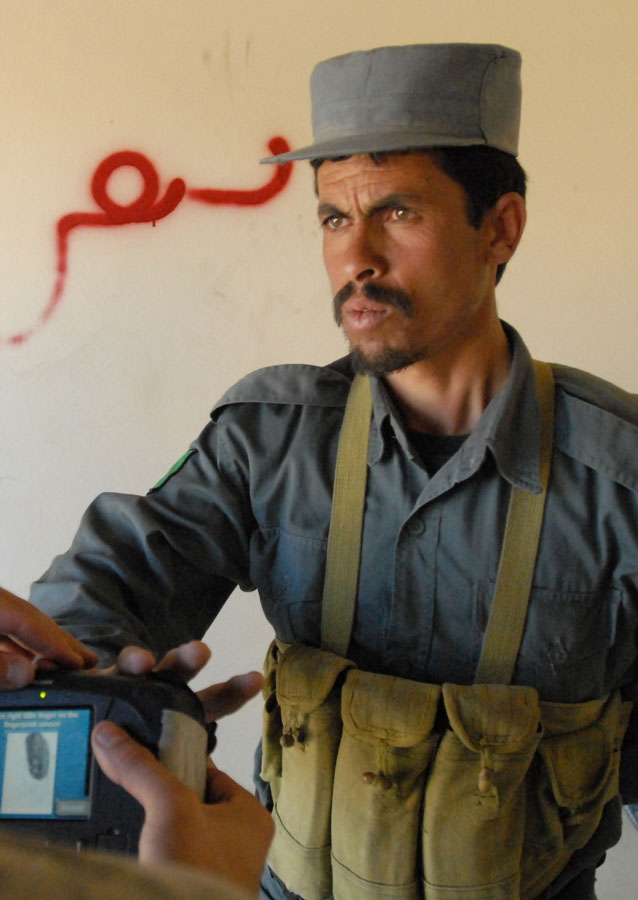
PARWAN PROVINCE, Afghanistan âPatrolman Safidulla, an Afghanistan National Police officer from the Kuh-e Safi district, gets his biometrics put into a handheld interagency identity detection equipment database by 4th Platoon, Company B, Special Troops Battalion, 82nd Airborne Division Soldiers, at Dandar Patrol Base in Parwan, Afghanistan, Sept. 30. The system uses fingerprints, iris imaging and facial recognition technology and is similar to security measures for U.S. servicemembers and government employees obtaining work in their field. (U.S. Army photo by Spc. William E. Henry, Task Force Cyclon Public Affairs)
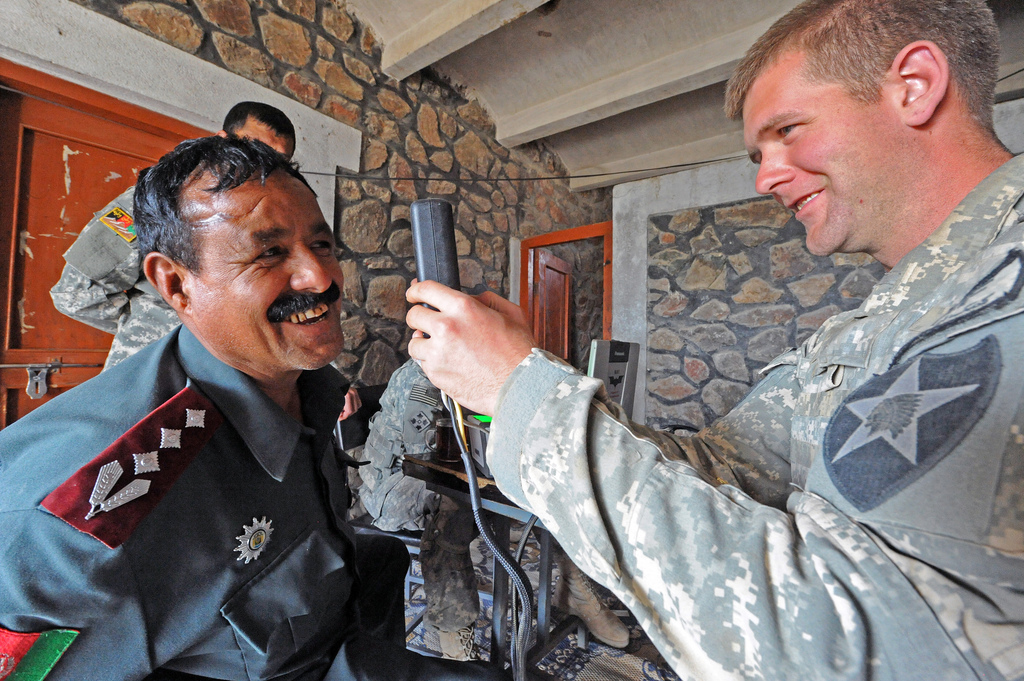
U.S. Army Pfc. Samuel R. Gronau collects biometrics from Afghan National Police (ANP) Col. Gul Mohammed in Taktehpol, Afghanistan, March 10, 2010. Gronau is assigned to Bravo Troop, 8th Squadron, 1st Cavalry Regiment and Mohammed is the commander of Taktehpol?s ANP division. (DoD photo by Tech. Sgt. Francisco V. Govea II, U.S. Air Force/Released)

A member of the Provincial Reconstruction Team uses the Handheld Interagency Identity Detection Equipment (HIIDE) to store biometric information of the Road Maintenance Team (RMT) workers at Forward Operating Base Kutschbach, Kapisa Province, Afghanistan, 30 March 2010. (U.S. Army photo by Staff Sgt. Horace Murray/Released)(100330-A-3996M-082)
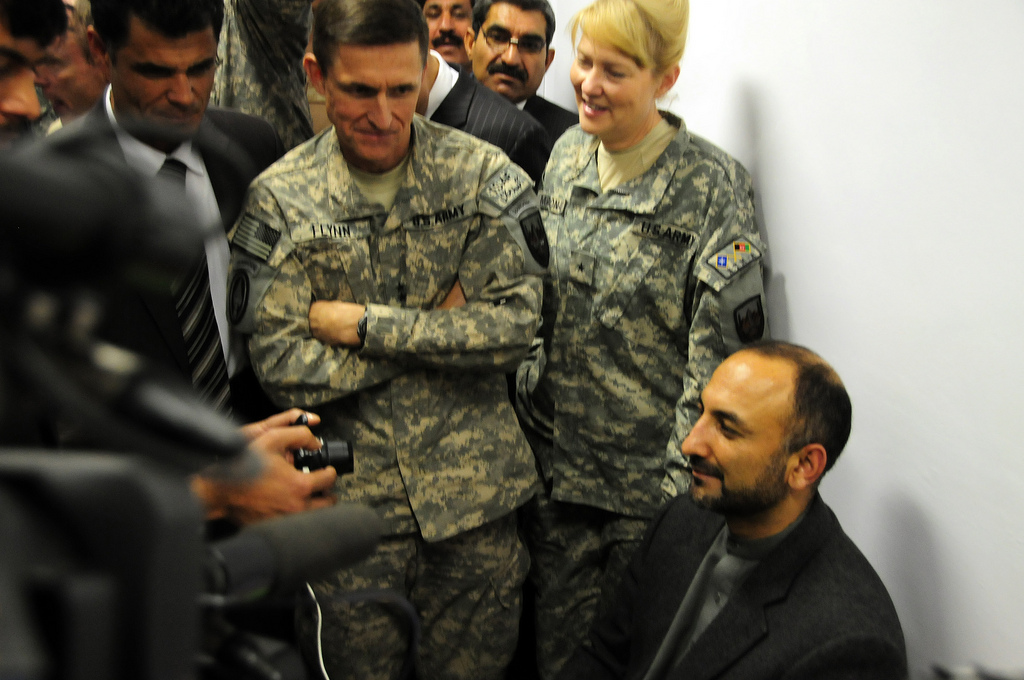
100116-F-1020B-101 Kabul - Minister of Interior Mohammad Hanif Atmar sits for his Afghan Automated Biometric Identification System (AABIS) photo at the grand opening of the new biometrics center at the Ministry of Interior (MOI). Minister Atmar officially registered in the new biometrics system, as all MOI employees are required to enroll in AABIS. (U.S. Air Force photo by Staff Sgt. Sarah Brown/RELEASED)

1006-N-6031Q-001 KABUL, Afghanistan -- Soldiers from the Afghan National Air Force participate in biometric data collection of their personal history, iris scan, thumb print, and urinalysis under a new accountability program in the Afghan Air Force. (US Navy photo by Mass Communication Specialist 2nd Class David Quillen/ RELEASED).
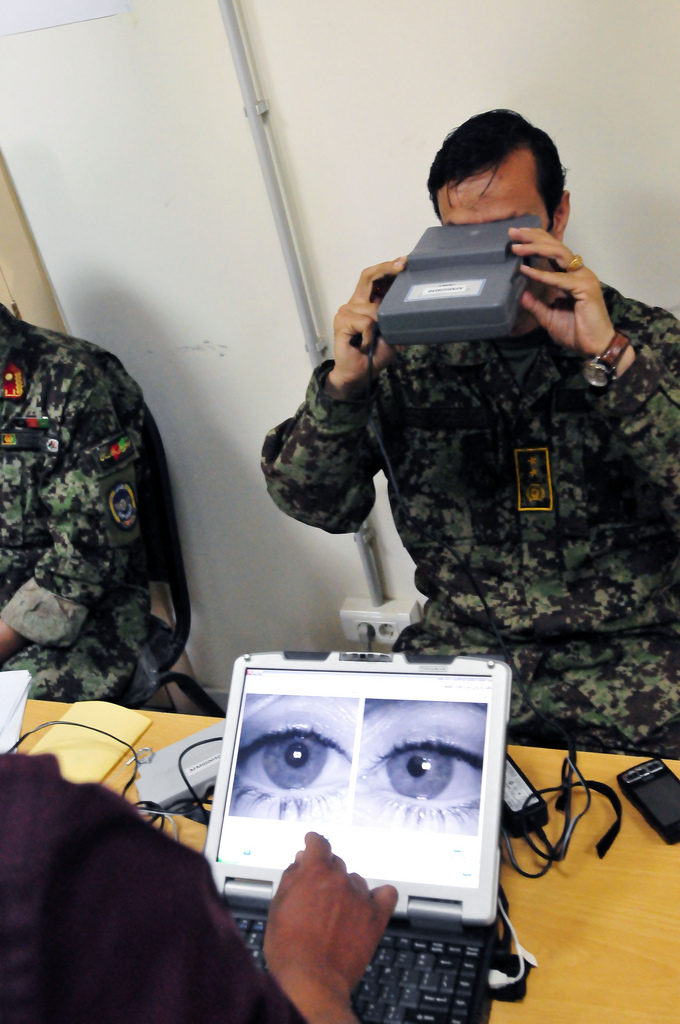
1006-N-6031Q-001 KABUL, Afghanistan -- Maj. Gen. Abdul Sabour, Director of INtelligence for the Afghan National Air Force participates in biometric data collection of his personal history, iris scan, thumb print, and urinalysis under a new accountability program in the Afghan Air Force. (US Navy photo by Mass Communication Specialist 2nd Class David Quillen/ RELEASED).
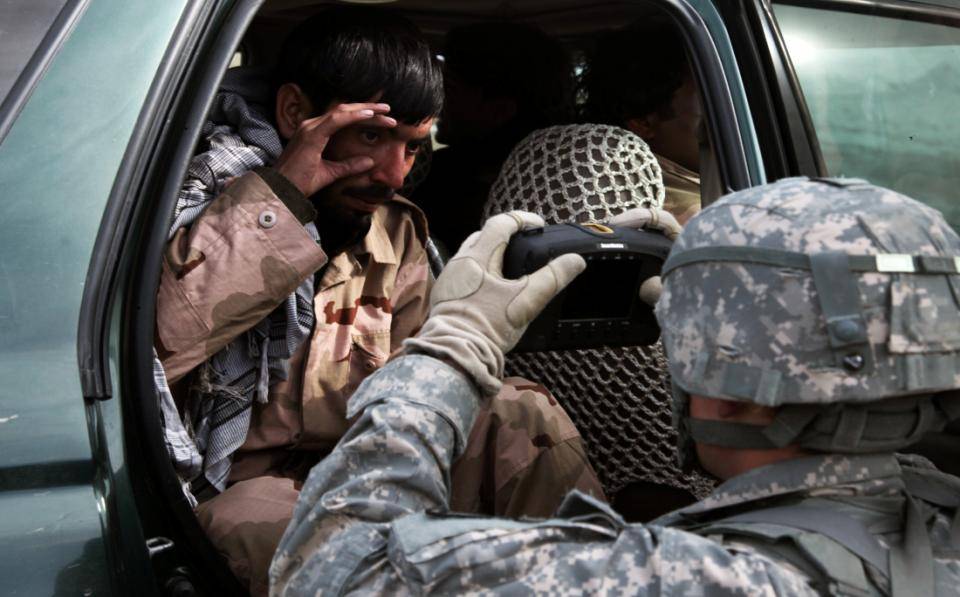
A soldier from 2nd Platoon, A Company, 1-503rd Infantry Battalion, 173rd Airborne Brigade Combat Team enters a member of a private Afghan security company into the Biometrics Automated Toolset (BAT) Handheld Interagency Identity Detection Equipment (HIIDE) System near the village of Heyderk Hel, Wardak Province, Afghanistan, Feb.18, 2010. The BAT HIIDE System assists soldiers in community mapping. U.S. Army photo by Sgt Russell Gilchrest. (Released)
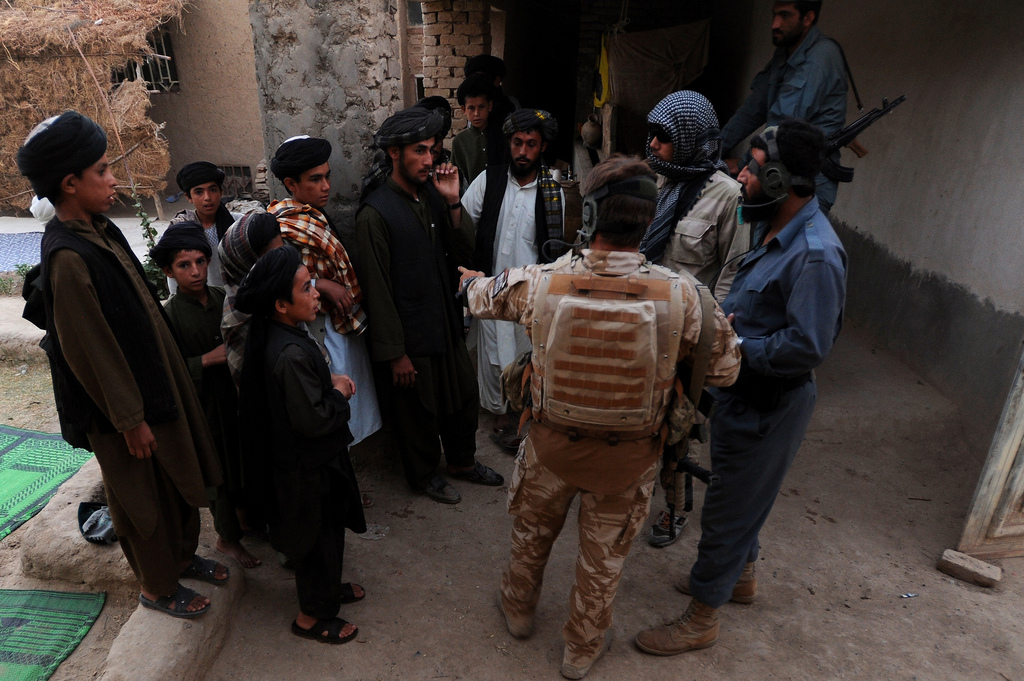
A British soldier with Royal Air Force II Squadron and Afghan National Police officers gather men from a village in Dand District to take their biometrics, June 26, Dand District, Kandahar, Afghanistan. RAF II Squadron partnered with the Afghan National Army 205th Corps and Afghan National Police to perform a joint patrol through local villages in search of insurgents, weapons caches and illegal drugs. As a result, three insurgents were found and detained, along with several pounds of marijuana.

Sgt. Nick Bender conducts an iris scan of an Afghan village elder's eye during a cordon and search mission Feb. 9, in Farah province, Islamic Republic of Afghanistan. The Marines use the Biometric Automated Toolset to identify Afghans by using fingerprints and iris scans. Bender is the Company-Level Intelligence Cell chief with Company I, 3rd Battalion, 8th Marine Regiment (Reinforced), the ground combat element of Special Purpose Marine Air Ground Task Force - Afghanistan. The SPMAGTF-A mission is to conduct counterinsurgency operations, with a focus on training and mentoring the Afghan national police.
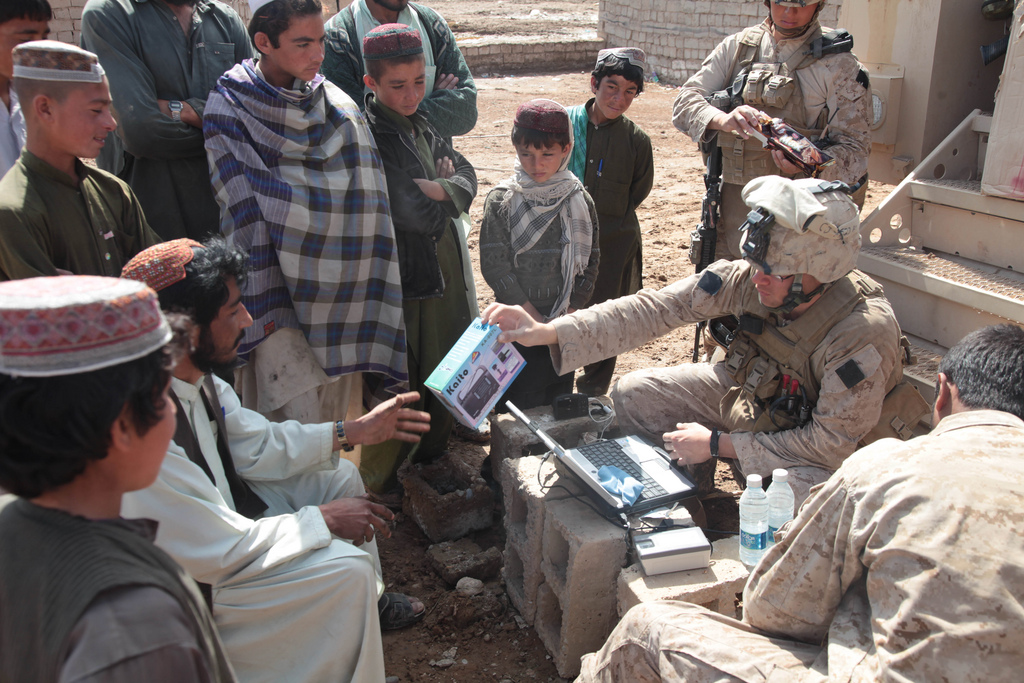
U.S. Marine Corps Lance Cpl. Maxx A. Juusola, with Charlie Company, 1st Battalion, 3rd Marine Regiment, gives an Afghan man a free radio after inputting his data into a biometrics automated tool set near Marjah, Afghanistan, Feb. 22, 2010. The biometrics tool is used to easily identify Afghans in the local area. (DoD photo by Cpl. Albert F. Hunt, U.S. Marine Corps/Released)
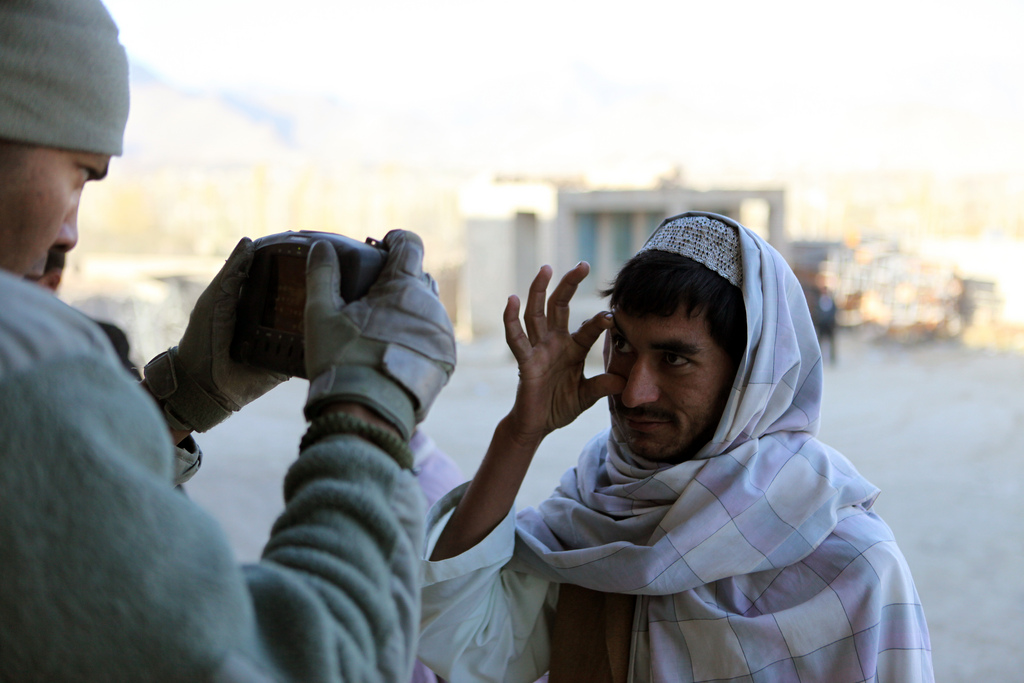
A US Army soldier uses the Handheld Interagency Identity Detection Equipment (HIIDE) system to create a biometric profile of a local villager. The data will be used to ensure security by preventing known threats from disrupting the village medical operation.

A US Army soldier uses the Handheld Interagency Identity Detection Equipment (HIIDE) system to create a biometric profile of a local villager. The data will be used to ensure security by preventing known threats from disrupting the village medical operation.
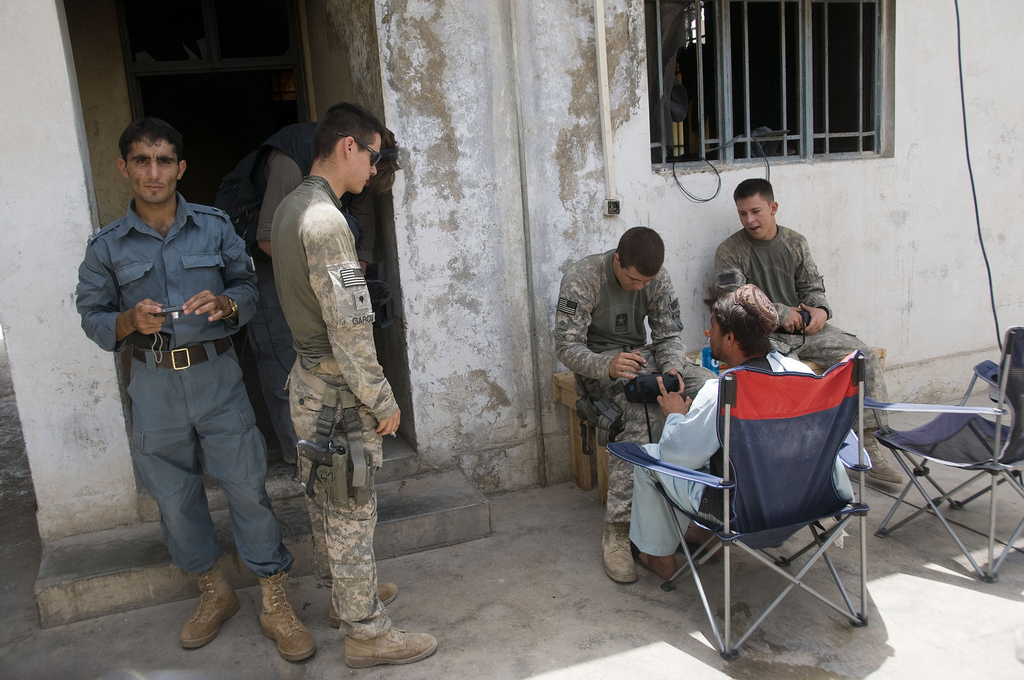
100603-F-1020B-032 Kandahar - U.S. Army soldiers conduct biometrics registration at an Afghan National Army sub-station in Kandahar province June 2, 2010. U.S. Army and NATO forces are partnering with Afghan National Police throughout the city as part of the "Hamkari," or cooperation concept. (U.S. Air Force photo by Staff Sgt. Sarah Brown/RELEASED)
